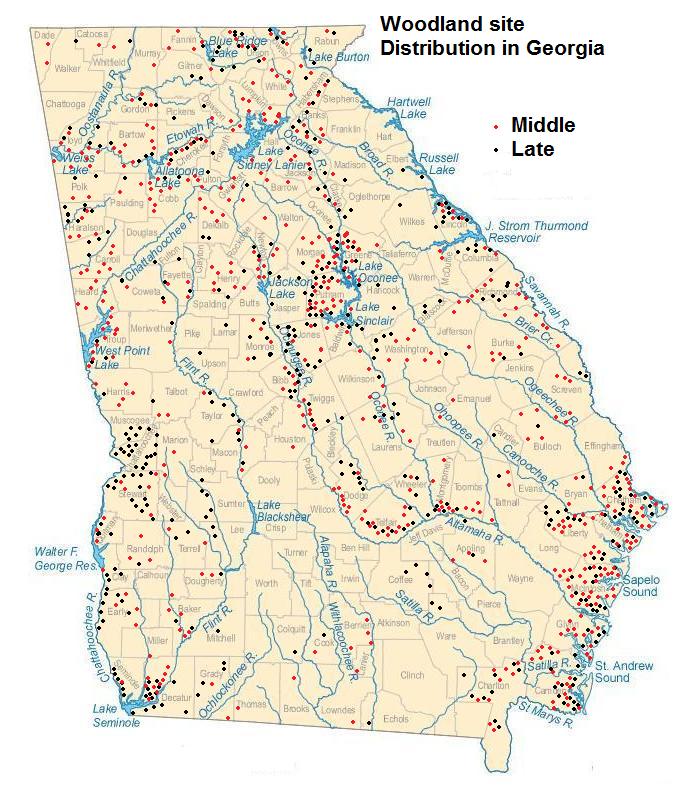Name: John Whatley applied the name Late Woodland Triangular to this type to demonstrate the appearance of these small triangular blades in the archaeological record.[1] TMN Lewis and Madeline Kneberg named this type the Hamilton point for Hamilton County, Tennessee where they were first reported.
Age: Sassaman estimated the appearance of these points at AD100, “but certainly by AD500.”[2] The lithic technology of the McKeithen Weeden Island sites was dominated by these triangular points. These sites began to appear directly from the Deptford sites by 200 A.D. across northern Florida, spreading across southwestern Georgia. Mound construction began at the McKeithen site near Lake City, Florida about 350 A.D. Point types identified as Pinellas (here named the Woodland Triangular), Tampa, and Ichetucknee were scattered throughout the site. Mound B was constructed as a low platform mound, upon which had stood the house of a prominent person. A burial excavated beneath the floor of the house contained the presumed occupant. The individual had been shot in the left buttock with what Jerald Milanich described as an “arrow” point. The 1.25 inch Ichetucknee point was still embedded in the bone. This seems to be the beginning of use for the bow and is the earliest fatality by an arrow.
Description: The Late Woodland Triangular point is small, measuring only between .75 and 1.5 inches (19 to 34mm) in length with occasional examples reaching as much as 2 inches (50mm) in length. The blade ranges from equilateral to isosceles triangular in shape. Blade edges are usually straight, but can be concave. The basal edge is flat to incurvate, or rarely slightly excurvate.
Distribution: Late Woodland Triangular points are expected to occur in nearly all counties in Georgia. The map below illustrates the Middle and Late Woodland sites where these points are more likely to occur.

[1] Whatley, John S., An Overview of Georgia Projectile Points And Selected Cutting Tools, Early Georgia, Vol. 30, No. 1, The Society for Georgia Archaeology. April, 2002, p.64
[2] Sassaman, K.E., J. Brooks, G.T. Hanson, and D.G. Anderson, Native American Prehistory of the Middle Savannah River Valley: A Synthesis of Archaeological Investigations on the Savannah River Site, Aiken and Barnwell Counties, South Carolina. Savannah River Archaeological Research Papers I, Occasional Papers of the Savannah River Archaeological Research Program, South Carolina Institute of Archaeology and Anthropology, University of South Carolina, Columbia.